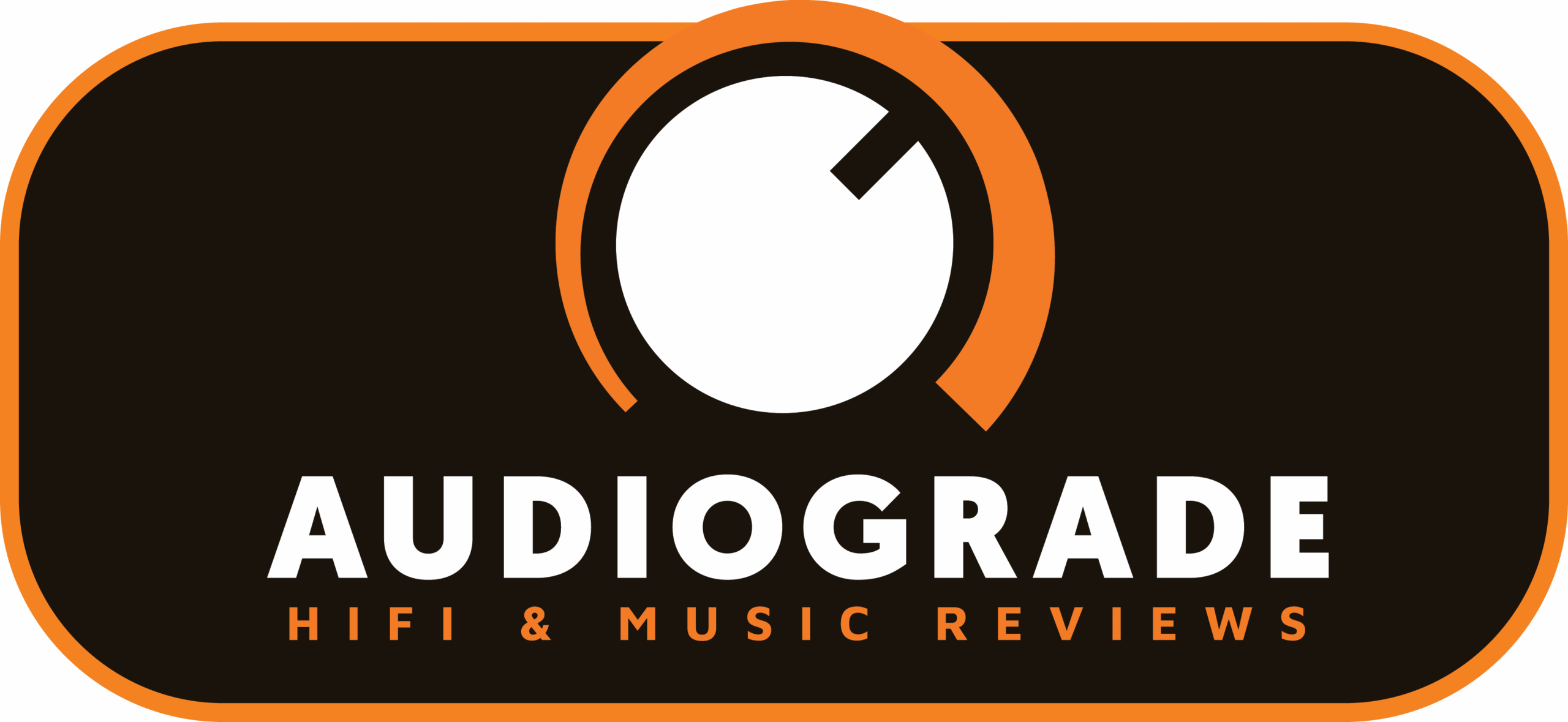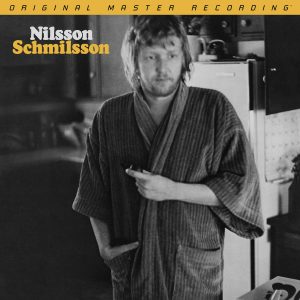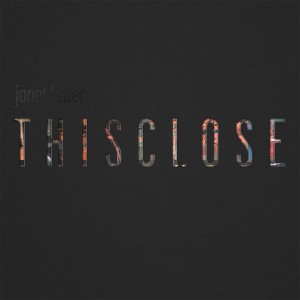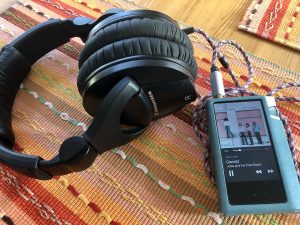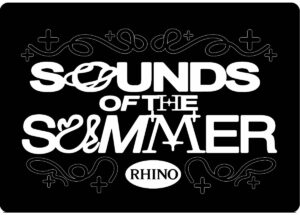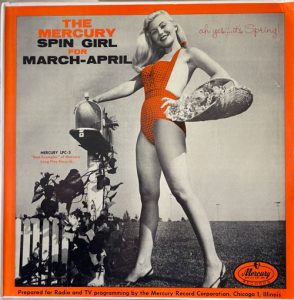Part 2: RECORDINGS
In the 1990s, the music industry moved from reel-to-reel recorders, both analog and digital, to DAW recording systems, i.e. computer workstations. The Alesis Electronics ADAT digital multi-track tape recorders represent a turning point in this history.
DIGITAL SOUND RECORDING – an audio preservation method in which the audio signals are converted into a series of pulses, corresponding to a binary code (i.e. '0' and '1') and recorded as such on the surface of a magnetic tape or optical disk. "ENCYCLOPÆDIA BRITANNICA" | www.BRITANNICA.com; accessed: 07.01.2021
The first experiments with stereo sound recording date to the 1930s, when the Bell Labs engineers, or the R&D branch of the AT&T began to work the issue. Together with their business branch, i.e. the Western Electric company, they prepared the foundations for stereo cinema sound. These were not the first attempts, because these dates back to 1880, when Alexander Graham Bell used the term "stereophonic phenomena," and a year later in France the first two-channel transmission was carried out.
The music recording had to wait a bit longer. Although the first preserved stereo recordings come from the 1930s - these are interesting recordings by Leopold Stokowski - it was only in 1939 in the Disney film Fantasia that one could hear what it was all about. The first purely musical recordings were made in 1952, during sessions for the Atlantic label, when Tom Dowd, using a Magnecorder tape recorder with double the number of heads, recorded a stereo sound with the intention of actually releasing the material.
The first American publisher to actually consider utilizing these ideas commercially was RCA Victor in 1954. A year later, a recording studio owner, sound engineer and inventor, Bob Fine, began recording on three tracks for Mercury Records' Presence series using a modified Ampex 350-2 tape recorder, starting a race that ended in the early 1990s. with an incredible and completely impractical number of 128 tracks.
C. Robert Fine in Bayside Studio, 1961. Source: T. Fine
As the number of tracks grew rapidly, from one to two and three, then four, eight, sixteen and finally twenty-four, each time the engineers had to reconsider their idea of what stereo sound was. Susan Schmidt Horning in a monograph on the art of recording, entitled Chasing Sound. Technology, Culture & the Art of Studio Recording from Edison to the LP, speaks of the ability to locate signal sources in space as a "mental architecture of sound" (p. 125).
The more tracks music producers had at their disposal, the less the recording resembled a "document" and the more a "creation," an independent event. In 1966, The Beatles entered the EMI recording studio in London with the intention of recording "new kinds of sounds." Since then, they never wanted to go on tour again, because they didn't want to be limited in their work by playing their songs live. They were not alone in their views. The pianist Glen Gould believed that artists should be able to use recording techniques to "go beyond the restriction that performance places on the imagination."
Thus began the era of "constructed" rather than reconstructed sound, the era of using the studio as another instrument, an era in which former "engineers" became creators—and therefore artists. And a fundamental role in this change was played by increasing number of tracks on which sound could have been recorded using a tape recorder.
RECORDING STARTEGIES
Or, how can one record, mix and master audio material?
With the increasing number of tracks recorded on a magnetic tape, the sound quality decreased—as more information had to be stored on a smaller space. And even switching from 1" tapes to 2" ones did not help much, because quickly, instead of 16, they started recording 24 tracks on it. The extension of these possibilities came with a synchronization of two such machines. By sacrificing one track for synchronization, you got a track with 47-tracks. Systems of this type, however, were unreliable and copying, combining and editing such material was terribly difficult.
Ampex MM-1000 tape recorder press ad - the first device offering 16 tracks using 2" tape, around 1969, photo from press materials
MULTI-TRACK RECORDERS
The solution came with digital recorders—copying did not decrease the quality and the synchronization was much more reliable. Mitsubishi ProDigi tape recorders offered 32-tracks and Sony DASH 48 tracks, which seemed to be sufficient in most projects. However, no one was prepared for what Alesis ADAT tape recorders brought with them. A single device offered eight tracks that were scalable up to a staggering number of 128! As it soon turned out, this abundance of tracks did not necessarily do much good for some artists.
However, the recording process itself is just the beginning. In the pre-tape era, if you can say so, the recording took place simultaneously with the mixing and mastering—after the session, the finished acetate was obtained, used to prepare matrices for pressing records. Apart from exceptions, such as the Les Paul's sound-on-sound technique, which allowed adding new sounds to the already existing acetate, i.e. creating next generations of acetates (even a dozen or so!), the recorded material was identical to the released one.
The change was brought by multitrack tape recorders, namely Ampex 400, introduced by the end of 1952—already three-head recorders allowed for separate voice recording. Columbia engineers took advantage of this quality by recording the sessions of Frank Sinatra, Nat 'King' Cole, Dean Martin and many others—to later balance them during the mix. After the more tracks were added, it was possible to add more parts, to copy them from other tracks, etc.
More tracks allowed for more creative use of the recording studio. As in the Sessions with Sinatra. Frank Sinatra and the Art of Recording writes Charles R. Granata, the orchestra could have been recorded on the first two tracks and the singer on the third:
The engineer mixing the material could combine and manipulate the three channels in different ways […]. The three-track system made it very easy to add vocals to the orchestra - it was much simpler and cheaper than it was in the case of acetate recordings. (p. 131)
MIXERS
A device that allows you to combine, i.e. mix tracks, add effects, compress, etc. is called a mixer(mixing console). Interestingly, engineers who specialize in mixing were also called mixers. The advent of stereo sound and ever-larger mixers changed the understanding of sound and studio practices. The already mentioned prof. Schmidt Horning titled a chapter devoted to them significantly: Recording Consoles and Black Boxes: the Control Man's Instruments.
The evolution of the mixers ran in parallel with the evolution of tape recorders—the number of channels and external devices gradually increased, resulting in a creation of monsters with 96 or more inputs. Only the best, wealthy studios could afford the best and largest consoles. These devices were extremely expensive, therefore, once bought, they even outlived several generations of recorders. Smaller studios used simplified versions, or consoles that were designed straight away for small projects—this was the case with the Mackie mixing consoles, which were often used with ADAT recorders.
All these mixers, however, had one basic feature: they were analogue devices.
Neve 88RS, one of the most popular analog mixing consoles, with 88 inputs, photo press releases
You see, although history of music recorded digitally for its later release dates back to 1968, when engineers of the Japanese state television KHT conducted the first successful trials with a monophonic digital recorder, for many years it was the only element of the ecosystem that was digital. In the long run, engineers back then saw signal flow only in the digital domain, but this was only a dream, not a reality.
Here and now, that is throughout the 1970s, the multitrack material recorded in this way was mixed in the analog domain and published in the same domain. Even if it was recorded back on a digital mastering tape recorder, it was released anyway on an analog medium, LP or tape, and later on a cassette tape. The next step towards closing the digital chain from recording to playback was made after the launch of the compact disc format in 1982, when it was possible to "tick off" this last point.
Still, between digital recording and digital reproduction we were dealing with the uniqueness of analog mixing consoles. So, if the signal was recorded on a multi-track digital tape recorder, it had to be converted to an analog signal, mixed on an analog mixing console and—if we wanted to get a digital master right away—converted back to a digital signal.
The reason for this was related to technology—digital mixing consoles (DMC) of the size offered by Rupert Neve, API or Soundcraft were not initially available, and later were extremely expensive and recording studios were not willing to replace solutions that had already proven to work well with uncertain and not sounding as good new technology. Even today, although fifty years have passed since the debut of the first LP with a digitally recorded signal, the vast majority of recording and mixing studios still use analog consoles.
At the time when ADAT tape recorders went on sale, they were most often combined with equally inexpensive consoles—that is, analog ones. It is mainly about Mackie mixers, Ghost series Soundcraft consoles, GS series from Allen & Heath and even Alesis itself offered Studio 24 & 32 analog mixers for a complete recording studio a la ADAT.
1994 JVC DAS-900 digital mastering system in a press advertisement. Please note that it only offered four mono inputs and one stereo output, photo press release
The first affordable mixing console was proposed by Yamaha in 1994 with the launch of the ProMix01. Despite its obvious advantages, such as ease of use, it was not very popular. The company MCA Victor used this opportunity in its own way, and installed the JVC DAS-900 digital mastering system in their studios, that was used to remaster material released in 1994 on K2 HQ CDs. However, this is an exception.
That is why the albums that we are going to listen to in a moment have been realized in various ways. The beginning for all of them - except for one interesting case, was the same: the sound was recorded on digital
ADAT multi-track recorders, most likely on their first versions, i.e. as 16-bit PCM, 44.1 (or 48) kHz. What happened with such material later differs significantly from album to album.
There are several possibilities. The first assumes that the digital signal is converted to analog, mixed in the analog domain and recorded back on the ADAT tape recorder in stereo form - i.e. digitally:
DIGITAL (multitrack ADAT) → ANALOG → DIGITAL (stereo, ADAT, DAT)
In the second, equally popular one, the source was still the ADAT multi-track digital tape(s), and the signal, converted to analog, was mixed in an analog mixing console. The "master" tape, however, was recorded on a stereo analog tape recorder, ¼ or ½ inch. This is how, for example, the Brothers in Arms album by Dire Straits was prepared:
DIGITAL (multitrack ADAT) → ANALOG → ANALOG (stereo)
And finally, there is one more possibility, which we will see on the Leann Rimes Blue album. Initially, the basic tracks of the title recording were recorded on a 24-track analog tape recorder, and then the tracks were copied to digital ADAT and subsequent tracks were recorded digitally.
ANALOG (multitrack) → DIGITAL (multitrack ADAT) → ANALOG → DIGITAL (?) (stereo, ADAT)
Lets see how these strategies translate into the sound.
LET'S LISTEN
I don't want to completely bore out readers, so I divided the listening part into two segments. In the first one, we will discuss three titles, very important for the development of the ADAT format, by three female singers: Lisa Loeb, Alanis Morissette and Leann Rimes. I made a list taking into account the release date. We will start the next part a bit earlier, with the band Primus and their album Pork Soda from 1993, and we will end with the fantastic album of Patricia Barber entitled Companion. But this second part will also be arranged chronologically, taking into account the release date, not one of the recording. So, let's listen!
1994 - Lisa Loeb and Nine Stories, Stay (I Missed You). RCA 74321212522. Released: Mat 17th 1994 | Maxi SP compact disc
MUSIC
Lisa Anne Loeb (born 1968) is an American singer, author, producer, actress and philanthropist, holder of several Grammy Awards. Her long career began with the song Stay (I Missed You) used in the movie Reality Bites (dir. Ben Stiller, 1994). The song reached the top of the charts, even though the singer did not have a contract with any label at the time! It was helped by the success of the film itself, starring Winona Ryder, Ethan Hawke and Stiller himself.
RECORDING
The Stay (I Missed You) single was released in May 1994, and on the "B side" (it was a digital single, but still the terminology used came straight from the LP era) ) there is a remix of Stay (I Missed You) (Living Room Mix-acoustic). The music and lyrics were written by Loeb herself, and Juan Patiño and the singer were responsible for the production.
The recording was made at Universal City Studios, which is a relatively large studio. The producer, Juan Patiño, took care of the recording and the mix was handled by Brian Malouf. Man responsible for the mastering was Ted Jensen, currently the head of Sterling Sound, one of the most important mastering studios in the world. Jensen has produced and recorded such stars as TOTO, Cat Stevens, The Eagles, Billy Joel (The Stranger, 1977), The Alan Parsons Project (I Robot,1977), The Rolling Stones (Some Girls, 1978) and many, many other top artists. Lisa Loeb had a real dream team to help her out.
Unfortunately, it is not known what recorder was used for mastering, but almost certainly the digital signal was converted to analog and the mix was prepared in an analog domain.
DIGITAL (multitrack ADAT) → ANALOG (mix) → DIGITAL (?) (stereo master, ADAT, DAT)
SOUND
It is a very smooth and tonally balanced recording. It resembles what we will hear in a moment on the Alanis Morissette album—the vocal is located a bit further in the mix, behind the line connecting the speakers. The instruments surround it in a nice way, and the bass reaches really nice regions and has a deep and dense sound. The treble is not particularly selective or resolving— this also applies to vocals. This can be heard even better in the second track, where there only are processed vocals and guitar.
This recording highlights, as I say, very good tonal balance and zero "clinical" tendencies, that is technical ultra-correctness that digital recorders are often associated with. There is no trace of the incredible dynamics of recordings on Mitsubishi tape recorders, and there is no smoothness of recordings on Soundstream tape recorders. On the other hand, smoothness, balance, and simply coherency of everything are at a very high level.
1995 - Alanis Morissette, Jagged Little Pill. Maverick 9362-45901 2 | Reprise Records 35 97 37. Released: 1995 | compact disc
MUSIC
Jagged Little Pill was the third album by Canadian singer and author Alanis Morissette and her first international album; it was released on June 13, 1995. She started working on the material in her hometown of Ottawa, but real progress was made only after she moved to Los Angeles and hired the producer Glen Ballard. Ballard, winner of two Grammy Awards, not only helped to record, but also wrote the music with Morissette.
The album was an incredible commercial success. Over 33 million copies were sold and the singer became the first Canadian artist with a double Diamond record. Nine Grammy nominations, five won made Alanis Morissette, then 21, an international star. In 2020, Rolling Stone placed the Jagged Little Pill at 69th place on its "The 500 Greatest Albums of All Time" list. Let's add that Flea on bass and Dave Navarro on guitar, members of the Red Hot Chili Peppers, played in the You Oughta Know track.
RECORDING
The recordings were made since 1994, mostly in one take, at Ballard's house, often in ordinary rooms and corridors. Both did not have any money for these recordings and they were created out of an impulse of the heart and thanks to cheap ADAT recorders. The vocals, recorded with the AKG C12 microphone from the mid-1950s, in later mixes came from these demo recordings. The producer's studio was equipped with the first generation ADAT tape recorders. When asked in the book Behind the Glass how much material later on the album was recorded at his home, he replied:
"About 75 percent (of the material - ed.) was created in my home studio, which is certainly a professional studio, but not a commercial studio. The genesis of each song took place right here, so everything was created in this environment, just by the two of us."
Ian Jeffery Reynolds, Navigating the Modern Music Industry: From Production to Distribution, A Thesis Presented to The Honors Tutorial College Ohio University, May 2014, p. 12
The recordings were made on three interconnected ADAT XT tape recorders (24-tracks), but also the editing of most of them was done on them, and the mix was prepared on an analog console in Ballard's studio. The drum tracks in a few songs were digitally recorded and then transferred to an analog tape recorder. Mastering was done by Bernie Grundman in his Bernie Grundman Mastering studio. Some of the material was mixed on a DAT recorder (16-bits, 48 kHz), via an Apogee 500 converter, and some on an Ampex 499 analog recorder on ½" 15 ips tape:
DIGITAL/ANALOG (multitrack ADAT/drums) → ANALOG (mix) → ANALOG/DIGITAL (stereo master, DAT)
Christopher Fogel, who mixed some of the original material, told the Sound-on-Sound magazine regarding the analog release of the album from 2015:
Songs that had low, heavy bass, like All I Really Want and the loop in You Learn, were eventually taken from the DAT, while the rest came from an analog source. The last word belong to Chris Bellman from Bernie Grundman Mastering—I trusted this guy like no one else.
SOUND
Alanis Morissette's album is much better produced than both albums in this part of the article, which can be heard from the first to the last song. The sound density, I'm talking about the layers and the saturation of individual parts of the band, is much better, which makes the recordings seem much richer and more varied. The stereo base is wider, now the guitars, backing vocals and effects are spread across the whole panorama and are not focused—generally—on the axis as before.
It is interesting that in the tonality of this album attention is drawn to much less treble than on Lisa Loeb's and Leann Rimes', and yet the sound is more pronounced—this is because Morissette's vocal has a higher center of gravity, it's just higher. The producers did not exaggerate it, which would have happened to it today (and probably also during the reign of the analog tape), keeping the timbre so that the material is lively, strong, and yet subdued—just such a paradox.
Also the bass on this album was realized differently than on the two aforementioned discs. It is more punctual, more selective and it doesn't go that low. There it has a slightly warm character, a slight thickening in the mid-range, and here it is more even, but also—let's say it—less saturated. We can mainly hear its higher harmonics, which, although they fit perfectly into the sound's poetics of this album, draw our attention to the midrange, not to the bass.
This is still not a resolving recording, and the dynamics is not outstanding. Thanks to the appropriate selection of timbre proportions, "filling" the whole band with instruments, each of which has a section assigned to it, and a great arrangement of the instruments in the sound panorama, we get, however, a vivid performance that seems much more dynamic than on the Loeb's and Rimes' albums.
1996 - Leann Rimes, Blue. Curb Records CURCD 028. Released: June 6th 1996 | compact disc
MUSIC
Blue is a debut album by American country singer Leann Rimes, released on July 9th 1996 by Curb Records. It climbed to # 3 on the Billboard 200 chart and was number one on the Top Country Albums chart. It was also a multi-platinum album.
RECORDING
The Blue is an example of how the recording technique had changed since the times of simple "live" recordings—individual tracks were recorded in different studios, from Norman Petty Studios, Rosewood Studio, Midtown Tone & Volume, to Omni Sound. The so-called overdubs, were prepared in KD Studio, in Nashville. The mix was also split between these studios—names of producers and sound engineers would take half of this entry. Mastering was done by Glenn Meadows at Masterfonics.
The recording history of the Blue track was full of twists and it became part of the folklore of, so to speak, the world of country music. And this is the story of one of the album's producers, Norman Petty, and his Mesa Theater studio in Clovis. In 1978, he equipped it with top products, such as the MCI JH-400 mixing console and the MCI JH-24 24-track analog tape recorder. In the mid-90s, these were still top devices.
In 1994, LeAnn was one of Texas' musical discoveries. After much persuasion, her father agreed to let her enter Petty's studio to record some demo songs. Greg Walker, who was the chief engineer, decided that it was too good material for a demo and "ordered" a regular recording. The process of recording at first was pretty standard, with the use of an analog multitrack, but after some time it's been changed:
"That first album we recorded all the basic tracks to that 24-track analog machine, and then we had such a maintenance nightmare that we had several people work on that machine and finally Greg said, 'I'm going to buy some ADAT machines.' So we dumped all that stuff off the analog machine into the ADATs, which had just come out at that time."
Ron Skinner, Classic Tracks: The Making of Leann Rimes' Blue, www.mixonline.com 12.30.2014; accessed: 14.01.2021
Unfortunately, it is not known whether the "master" tape was an analog or digital one—there is no SPARS code on the disc. It is known, however, that mixing and mastering took place in the analog domain:
DIGITAL (multitrack ADAT) → ANALOG (mix) → ANALOG/DIGITAL (?) (stereo master, DAT)
SOUND
LeAnn, listened to right after Lisa Loeb, showed surprisingly many similarities between the two recordings. I mean mostly a smooth, very nice presentation. But I also heard a calmed down dynamics and only average resolution. This time the tonal balance was set a bit higher, but the bass went lower, which results in a good overall timbre.
The space is large and the reverbs perfectly suggest a large space. Rimes's vocals, as before on the Stay (I Missed You) album, are slightly set back in relation to the line connecting the speakers, so it is also not too big. It has good proportions in relation to other instruments, but with a "medium" volume. Sometimes, as in One Way Ticket (Because I Can) the voice is placed a bit closer, but only because it has less reverb, and not because it has more volume.
After all, it is a very good recording, although a bit dynamically flat and rather homogeneous—I'm talking about the bodies of the instruments—than differentiated. This is a good average, which today hardly any proposition recorded digitally in a DAW station can repeat.
To be continued…
Text: WOJCIECH PACUŁA
Images: press materials | Wojciech Pacuła
Translation: Marek Dyba

















